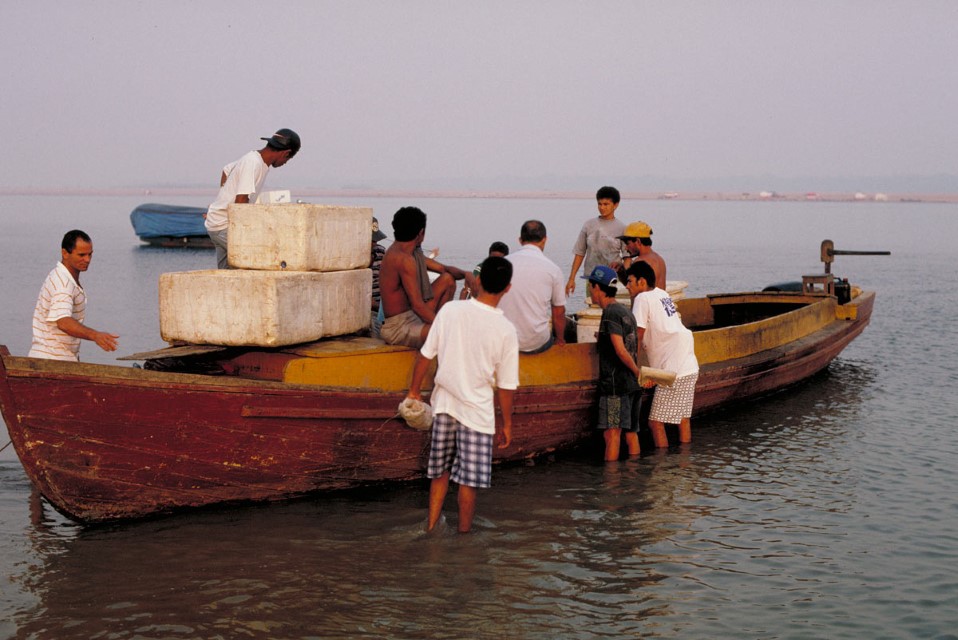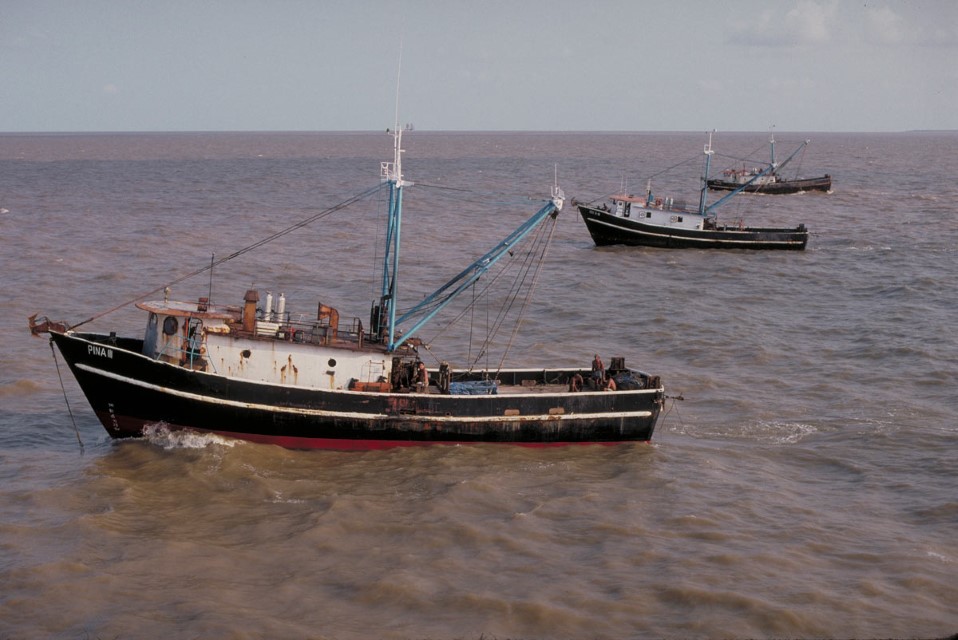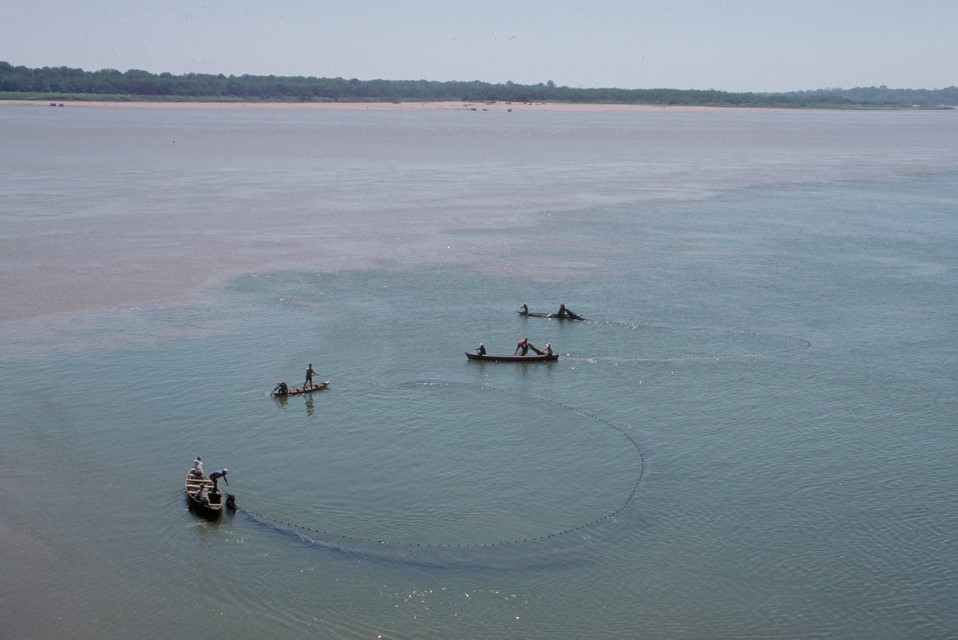
The Main Commercial Fishing Area of the Amazon centers on the Amazon River and the lower reaches of its whitewater tributaries that have headwaters in the Andes.
Fish has been the single most important animal protein source exploited during the history of the settlement of the Amazon Basin. The great variety of fishing methods developed by indigenous, riverine, colonial and mestizo cultures reflects the wide variety of habitats present and the richness of the fish fauna. Seasonally and regionally, other animals and especially turtles, manatees and terrestrial game, were also important, but there is no evidence that any of these replaced fish as the main animal protein source in most of the Amazonian Lowlands. Beyond any doubt there is a much larger biomass of fish than any of the alternative animal resources in or along rivers.
Scientists have gained a fairly thorough understanding of how indigenous cultures traditionally classified and exploited plants. However, studies of traditional fish resource use by native groups have proven difficult. This is mainly due to species identification problems and the limited background information available on the ecology of the aquatic resources. Most indigenous groups are now found in headwater regions far away from the most productive areas in the Amazon Basin. It is in these areas where we might still gain some understanding of their interaction with fish resources.
The great Brazilian literary naturalist and historian, José Veríssimo, went so far as to state that the principal reason that the Portuguese were able to easily settle the Amazon Basin was the near-ubiquitous availability of fish. The political policy of Brazil’s military government to occupy vast reaches of the Amazon valley by spurring economic development led to the explosive and unplanned growth of Manaus, Belém and other cities in the 1960s. Rhetoric concerning the fisheries at the time was borrowed from the regional myth of superabundance. In the 1960s and 1970s, in fact, there was an oversupply of fish as fleets grew and expanded into tributary areas that had up to then been little exploited. Until the end of the 1970s, fish was cheaper than either chicken or beef. A study of daily per capita fish consumption in Manaus in the late 1970s demonstrated a very high intake of protein averaging about 170 grams, much higher than minimum daily allowance of 50 grams recommended by most scientific studies.
Amazon fishing technology changed radically beginning in the late 1960s. Prior to that time total catches appear to have been taken in significant quantities with a wide variety of gear, including nets, gigs, bow-and-arrow, harpoons, bombs and pole-and-line. This gear continued to be widely used in the 1970s, but large seines (a vertical net with weights at the bottom, and buoys at the top) and gillnets accounted for most of the commercial catch, though not of all species. Seines were used mostly to catch migratory species. Gillnets proved to be much more versatile and economical than other gear and, by the 1980s, they had become standard equipment for urban, rural and peasant fishermen. No other major technological innovation in the history of the Amazon spread as far, wide, and quickly as gillnets. The main reason for this was the great dependence of Amazonians on fish and the realization that this gear was far easier and more effective than traditional methods for most species.
The estuarine fisheries were relative small-scale operations until the 1970s, when the Brazilian government began to help finance an expanding fleet, more sophisticated equipment and refrigeration plants. Unlike the fisheries of inland waters, those of the estuary became dominated by an industrial fleet aimed at exports to the national and international markets.
-

Pesquerías 1
Fishermen exploiting the Tucuruí Dam reservoir of the Tocantins River. Photographer: Michael Goulding
-

Pesquerías 2
Estuary trawls exploiting freshwater catfishes. Photographer: Michael Goulding
-

Pesquerías 3
Seine fishermen exploiting migratory schools at the confluence of the Jiparaná (Machado) River in Rondônia, Brazil. Photographer: Michael Goulding
BIODIVERSITY
CONTEXT
The Andes
Cataratas
Floodplain or Várzea
River Mouth Bays
River Channel
Estuary & Amazon Coast
Marajó and Inner Delta
REGION
Central Amazon
Bz-Co-Pe Border
Estuary
Lower Amazon
Peruvian Amazon
Juruá
Purus
Madeira
Upper Madeira
Tocantins
PRIORITY FISH
Characiformes
Clupeiformes
Osteoglossiformes
Perciformes
Siluriormes
